Austria: Knights of Graz
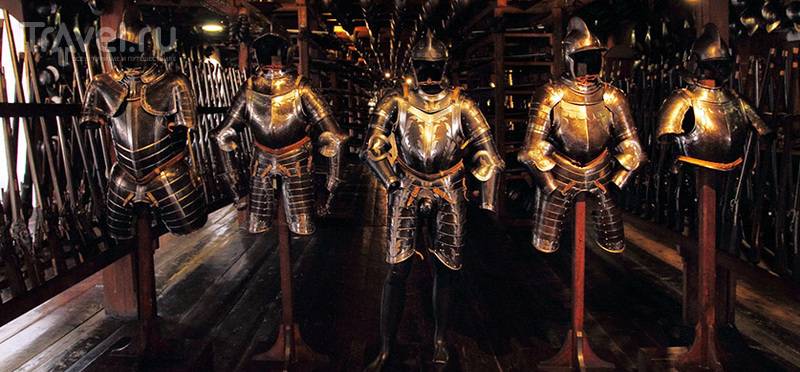
// www.andreev.org
(TV series "Sherlock Holmes")
The period from 15 to 18 century was stormy for the Duchy of Styria, located southeast of Vienna. This region was particularly affected by the constant armed raids by the Hungarian rebels. Yes, the Ottoman Empire intensified, and climbed with its cannibalistic values to the Danube through the whole of Austria.
The Styrian estates had a plan: to scatter regional warehouses with weaponswhere in the event of an attack, thousands of warriors and even civilians could arm themselves. As Kataevsky Mr. Rye Rup from “Time, Forward!” Spoke: “Who is the last? I am yours!”
As armed conflicts subsided in the 18 century, weapons depots lost their value. When, within the framework of a series of reforms, Maria Theresia decided to centralize the armed forces and close the armory in Graz, the capital of Styria, the owners of the estates begged the empress to keep the Arsenal as "a monument of regional stories".
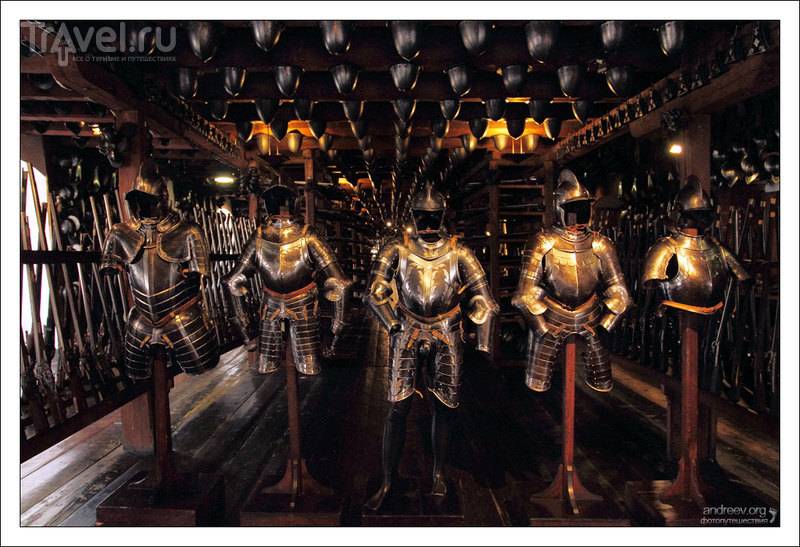
// www.andreev.org
It was opened to the general public as a museum at the end of the 19 century. Today Landeszeughaus is one of the largest historical weapons weapons in the world.
In the collection of more than 32 thousands of units not only weapons (cold and small), but also armor, including for horses.
Entrance tickets to Arsenal - euro for 13, small children - for free. Things are supposed to be handed over to the storage room (which, by the way, is transparent; it was not possible to come across it before). You can take pictures, but without a flash, but the room is dark, and there are ubiquitous caretakers on their heels. So this is a good opportunity to test your camera's abilities on ISO 3200 at a minimum. With a smaller value, you get fuzzy nonsense.
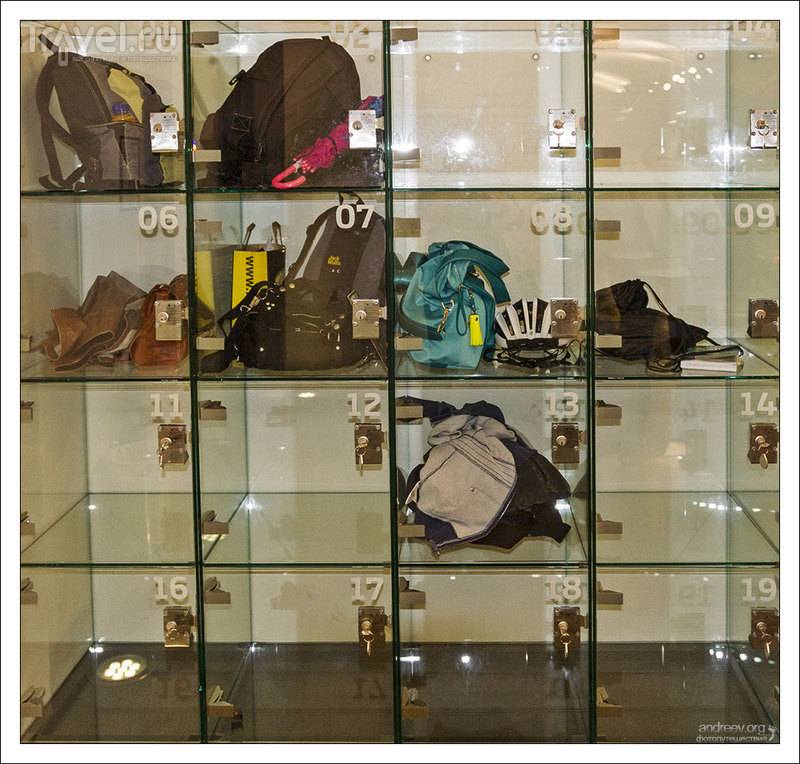
// www.andreev.org
In the 4 floor museum, there is an elevator, you can hire a guide, or rent an audio guide.
Audioguide (eng.) >>
Most start from the first floor, slowly moving up. We went the other way: we took an elevator to the upper, 4 level, and began a tour of the descending one. So you get tired less, and the crowd will not interfere.
Weapons neatly hung and arranged by type. There are no glass windows; If you wish, you can touch the old piece of iron, but this is asked not to do.
The fourth floor is a collection of cold weapons. For a long time, the infantry used halberds, pikes, and “morning stars,” while horsemen preferred swords and sabers. Most of the weapons in the Arsenal of the workshops of Upper Austria. He was brought to Graz by carts, which were to be overcome along the way somewhat "paid" - analogues of the modern "toll booth" on toll roads. So, carts with weapons were freed from tribute, as they were vital for military purposes.
Rows of protasans, bluffs, and spears glittered in a dim light. Protasan is a spear with a flat tip, mounted on a long (2,5 meter or more) pole. Subsequently, they began to perform mainly ceremonial functions, like halberds.
And the Glaive is a half meter shaft with a long (40-60 cm) knife with a spike. Used to repel cavalry attacks.
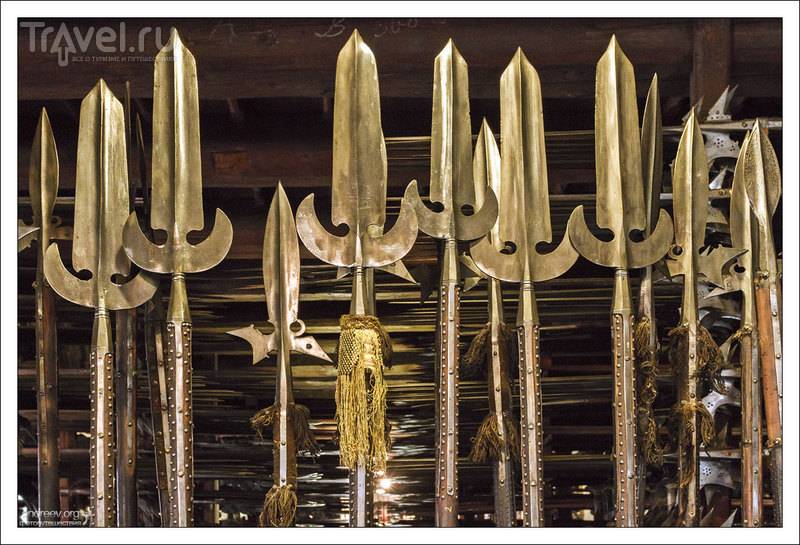
// www.andreev.org
Knights wielded two-handed swords to break through the ranks of the enemy with peaks. Since the swords were two meters long, they were held with both hands, which means that the warriors had to undergo additional training. But they paid more.
In Arsenal there is a good collection of flambergs - two-handed swords with a blade of a wavy (flame-shaped) shape. A flambergard stroke inflicted more damage on the enemy than a regular blade, and the wounds practically did not heal. The flamberg effect consisted primarily in the fact that with successive passage through the victim's body, the “waves” left a ragged wound with several parallel cuts inside it, which, taking into account the level of medieval medicine, almost always inflamed, causing gangrene. No wonder that this served as a basis for the legends about the "poisoning" of the flamberg. The "flamberg bearers" warriors naturally inspired fear and were the object of particular enemy hatred. Some commanders of those years sentenced the captured owners of the flambergs to death solely for carrying such weapons.
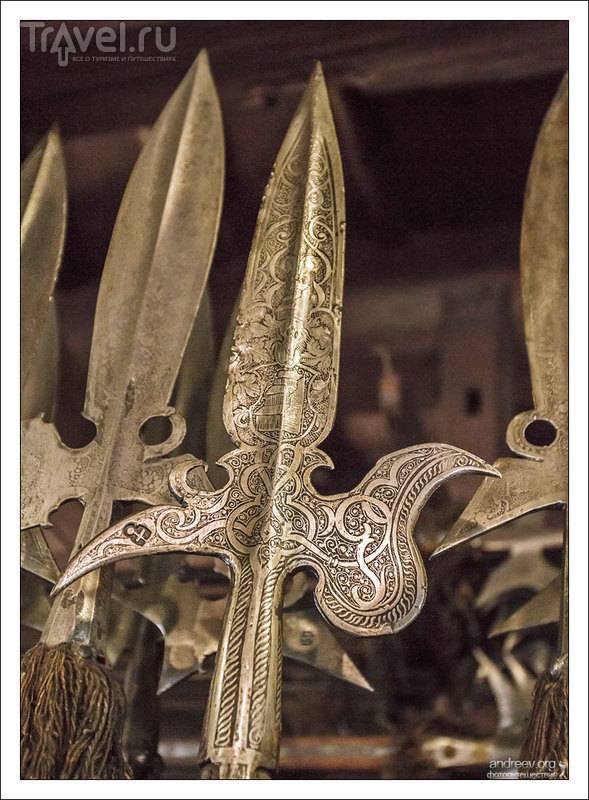
/ www.andreev.org
Slingshots (cheval-de-frise) were a construction of crossed and connected stakes or a peak. Used against cavalry, to block the roadway, bridges, on the approaches to the camps.
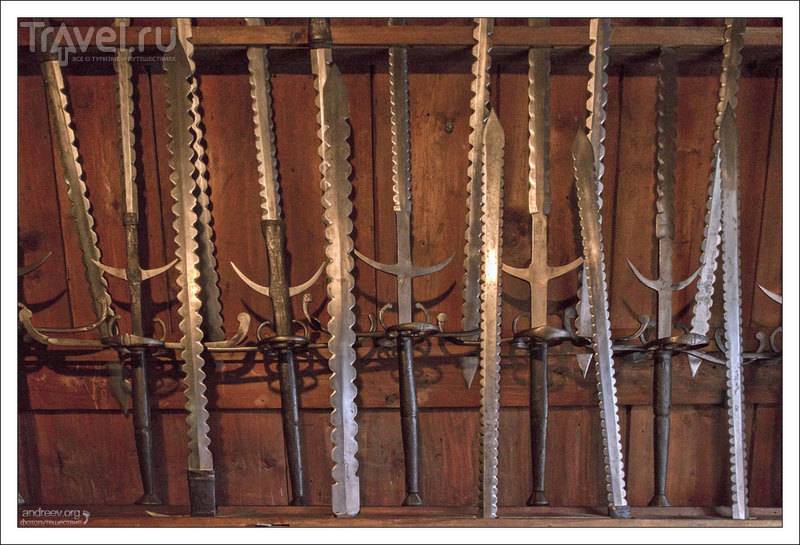
// www.andreev.org
Going down to the third floor, we found a horse there :) Or rather, his armor, weighing 42 kg (1600 year).
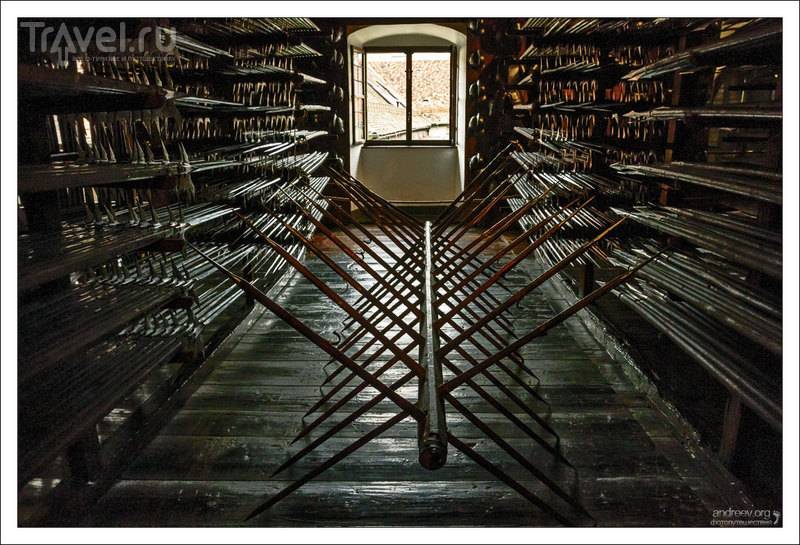
/ www.andreev.org
Horse armor "bard" (from the English. - Barding) made of metal plates, chain mail, leather, or quilted fabric. Horse armor was very valuable. The surviving specimens are presented in museums, mostly in parts. Complete kits are extremely rare.
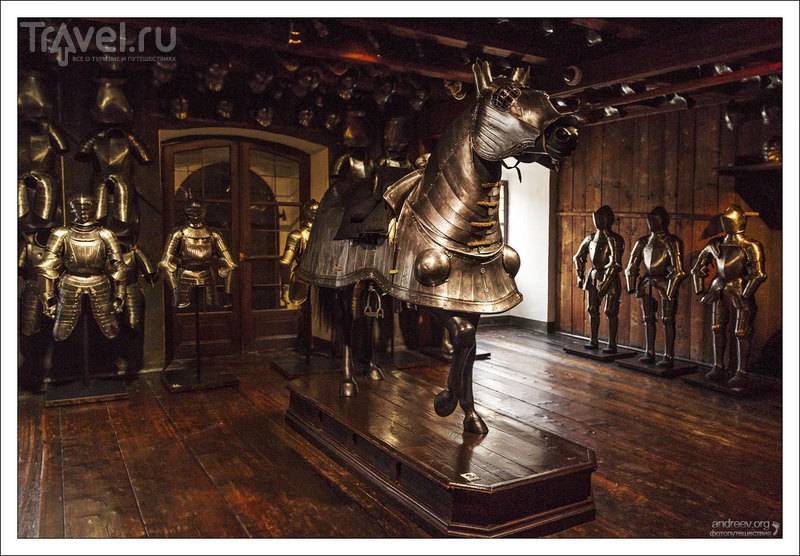
// www.andreev.org
Here the armor for people was hanged, but not simple, but past tests. Who plays golf, he probably knows that in this sport there is such a thing as an "experienced golf ball", i.e. ball "with experience", who visited the game. So here - armor is not old and "poyuzannaya", and "experienced" :)
To check the quality of the purchased batch, one copy was selected, which was shot with pistols from a distance of 10-12 meters. If the bullets did not pierce the armor, then the whole line was bought. Otherwise, the gunsmith provided a replacement at his own expense.
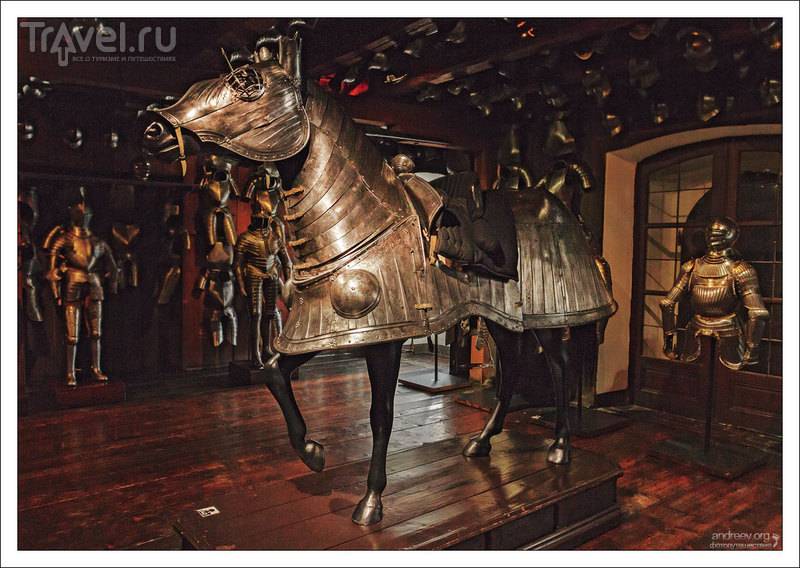
// www.andreev.org
On some of the armor of the South German production were printed peculiar stamps. They served as reliable evidence of quality, so products with similar marks were not tested.
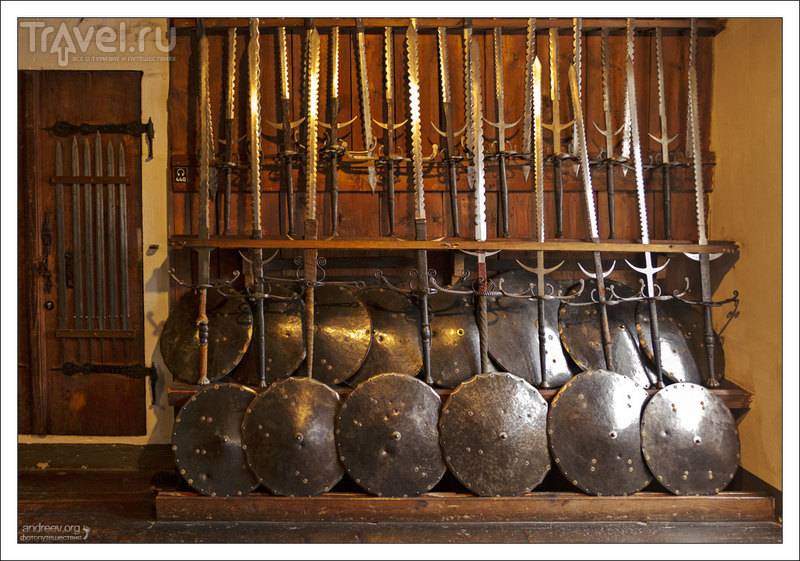
// www.andreev.org
On the second floor of the Arsenal, we found armor designed for different types of troops. Heavy cavalry wore cuirass - corsets-protection for the chest and back.
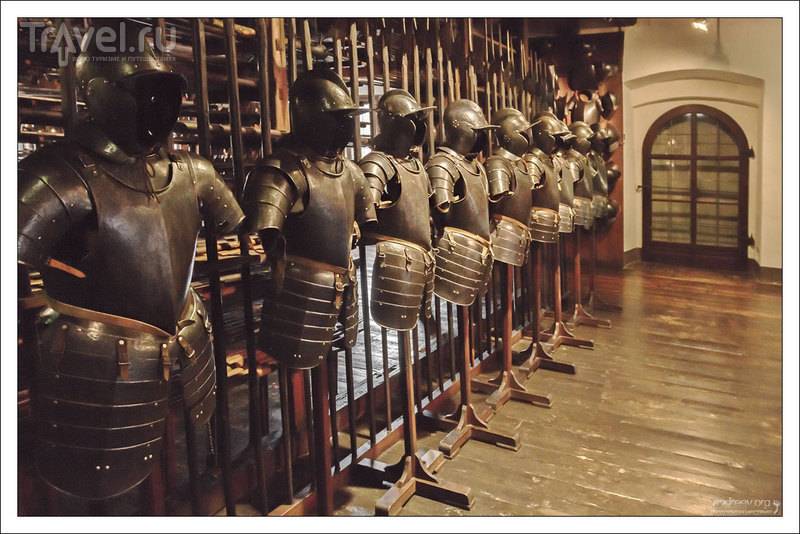
// www.andreev.org
Light cavalry was shackled in Trabharnisch, the so-called "bodyguard armor." Due to their low weight they could be used for riding.
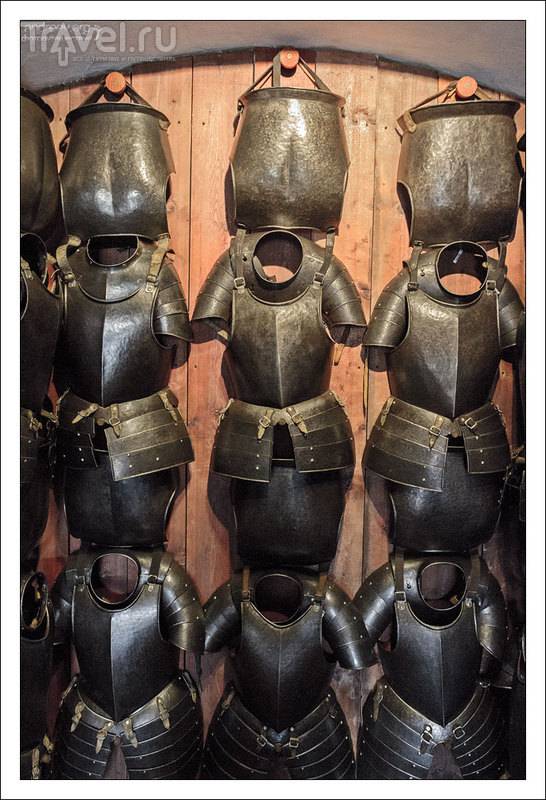
// www.andreev.org
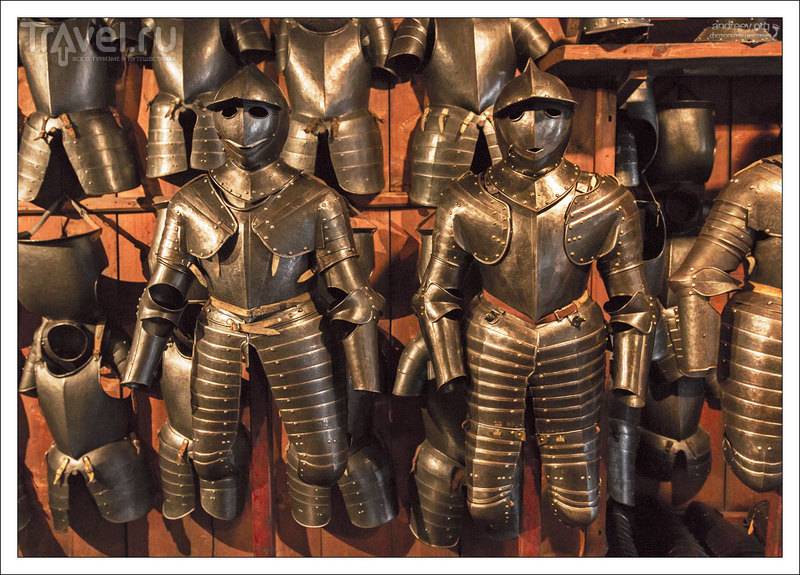
// www.andreev.org
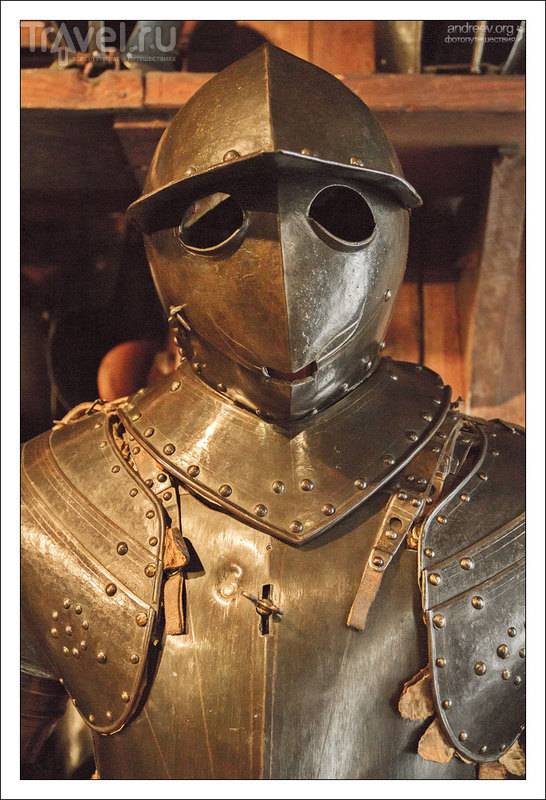
// www.andreev.org
At the front and back of the skirt, arc-shaped notches were cut out so that you could mount your horse. The most valuable part of the knight was covered with a waver;)
Looking around the hundreds of armor, it was involuntarily striking that all of them were designed for people of small stature by modern standards. But 400 years ago, a warrior of rising 160 cm was considered, probably, a hero. The models of Slava Zaitsev look with bewilderment.
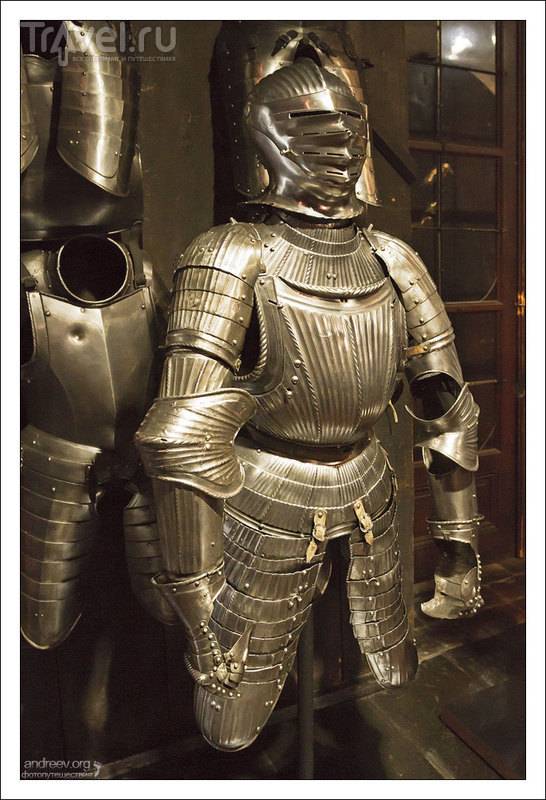
// www.andreev.org
Types and types of helmets are also quite diverse. Fully enclosed, on cogs, erihonki (lobster-tailed pot helmet), with eyebrows, and even with a smiling visor. "- I understand what your trouble is. You are too serious. All the nonsense on earth is done with this facial expression ... Smile, gentlemen ... Smile!" (from the movie "That Munchhausen").
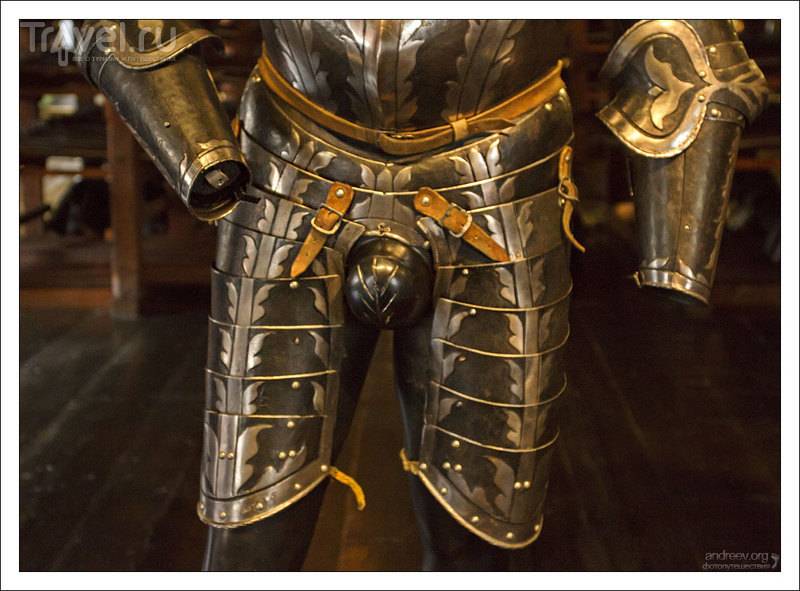
// www.andreev.org
On the second floor began a collection of small arms. In particular, pistols richly decorated with ornaments from bones of cattle were presented.
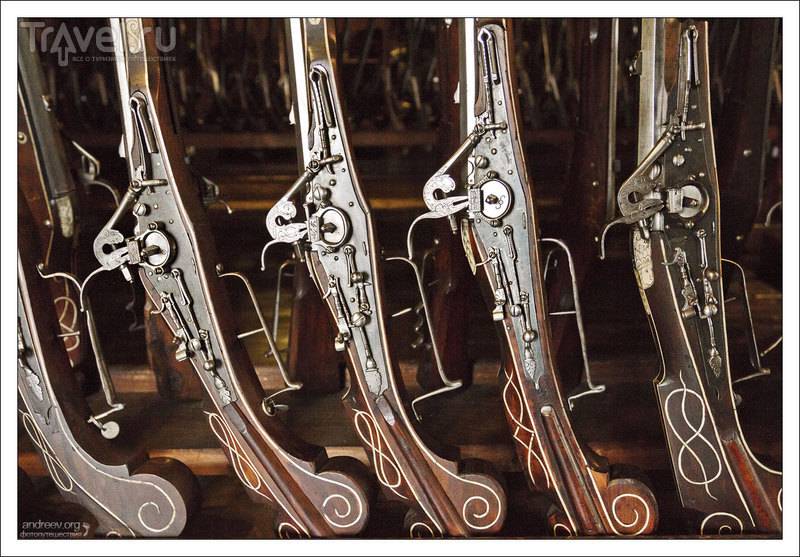
// www.andreev.org
The exhibition continued on the first level, where the 16, 17 and 18 centuries firearm was stored, such as: guns, mortars, heavy arquebuses, “doppelhakens” (32 kg!), I.e. guns with a hook. This "hook" was nothing more than a stand fixed under the barrel, which served to soften the powerful recoil of the gun. With the help of them shot from the walls, or through loopholes.
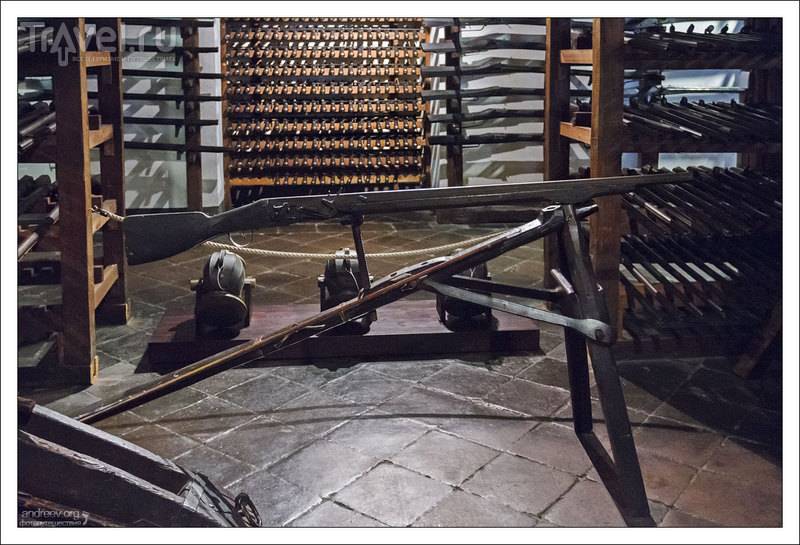
// www.andreev.org
The lighter versions of the arquebus, the muskets, have become the most important and effective weapon of the infantry. Musket bullets pierced steel cuirass at a distance of 200 meters.
Today, the greatest threat to the Arsenal collection is rust caused by high levels of moisture - iron exhibits. Although for any leather straps and blanket just a dangerous dry climate. Here it is important to keep a balance so as not to spoil either one or the other. Therefore, a team of three restorers is constantly working on the staff of the museum.
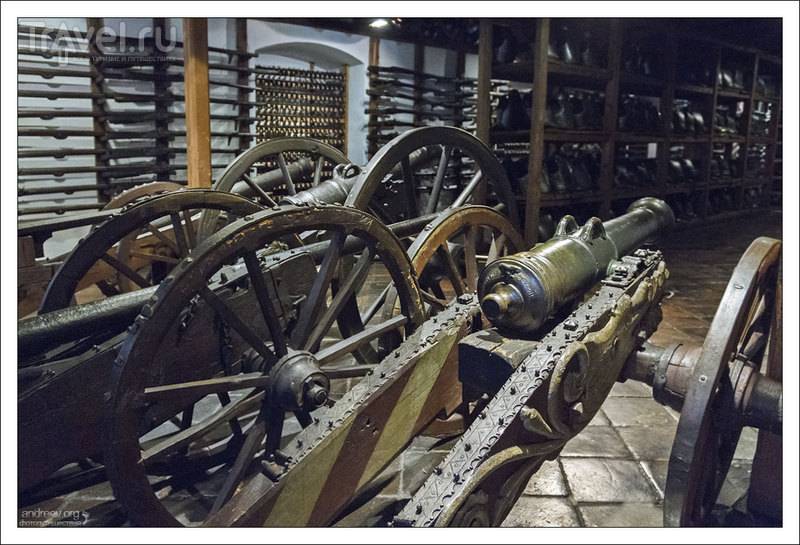
// www.andreev.org
Did we like it? Well, of course! The male part of the company, of course, will remain in gun ecstasy. And girls ... Well, maybe after a visit to the museum, somebody will find in himself the inclinations a la Xena - the warrior queen :)
- Frank Nicholas
- http://reports.travel.ru/letters/2017/01/258052.html
- // www.andreev.org
Information